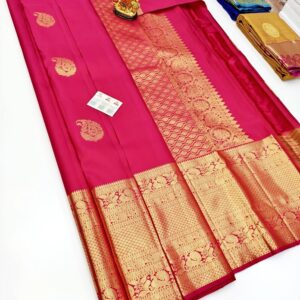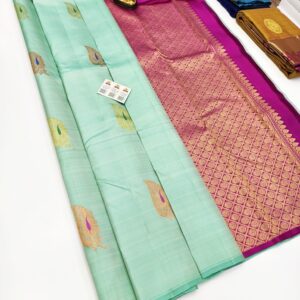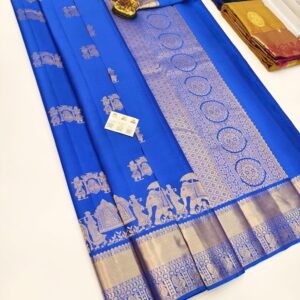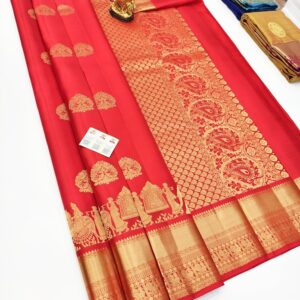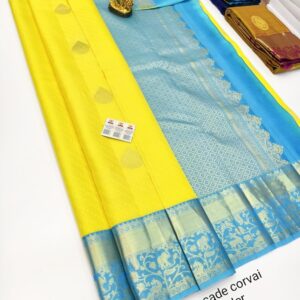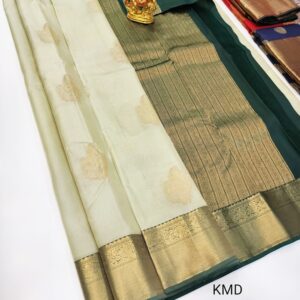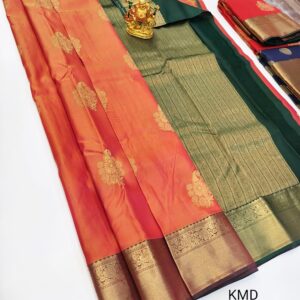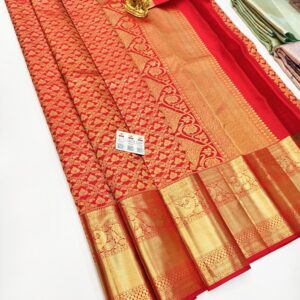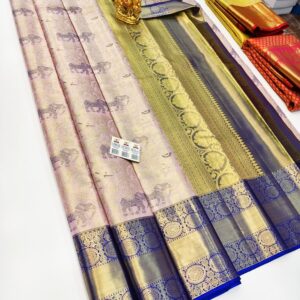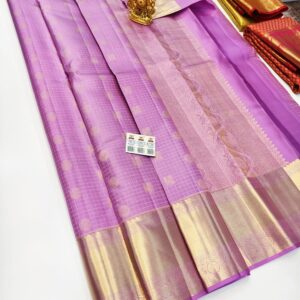Kanchipuram silk sarees, renowned for their opulent craftsmanship and intricate designs, have transcended geographical boundaries to become a beloved fashion ...
Silk sarees are exquisite garments that require special care to maintain their beauty and longevity. Cleaning a silk saree properly is essential to preserve ...
A half saree is a clothing combination that consists of a blouse, a long skirt, and a short scarf. This traditional Indian clothing has been around for ...
Raksha Bandhan is a festival that celebrates the bond between brothers and sisters, and what better way to show off your love than with mehndi designs? ...
1. Flipkart: Flipkart offers a wide range of readymade blouses to meet every fashion requirement. From traditional designs to modern silhouettes, ...
Diwali is one of the most important and celebrated festivals in India. From the fall of the Diwali night sky to the beautiful lights of the family's house, ...
A saree blouse design can significantly improve the appearance of your six yards of elegance. That is why traditional designers are trying to incorporate ...
The festival season has arrived, and it is a very dark, oppressive, and burning time. However, one need not worry about Mehndi. This article provides a wealth ...
Choosing the hottest blouse designs and patterns has become essential With so many options on the market, we are spoiled for choice when it comes to new ...
The saree is a traditional Indian dress that has become well-known throughout the world. Women love wearing it because a saree would elegantly and ...
Having a beautiful new mehndi design etched on your hands and feet is more than just a traditional Indian custom. Mehndi’s designs have played a significant ...
Idlis are rice flour batter-based steamed cake preparations. This batter is poured into and steamed in idli molds. The mushy idlis are typically served ...
User Deals: Ram Kumar
Pure Kanjivaram High Fancy Silk Saree Red Color w/ Blouse
 +91 9080459941
Whats App for Latest Sarees & Designs
+91 9080459941
Whats App for Latest Sarees & DesignsMango Design Pure Kanjivaram High Fancy Silk Saree Pista Green Color w/ Blouse
 +91 9080459941
Whats App for Latest Sarees & Designs
+91 9080459941
Whats App for Latest Sarees & DesignsNew Design Pure Kanjivaram High Fancy Silk Saree Blue Color w/ Blouse
 +91 9080459941
Whats App for Latest Sarees & Designs
+91 9080459941
Whats App for Latest Sarees & DesignsTrendy Design Pure Kanjivaram High Fancy Silk Saree Chile Red Color w/ Blouse
 +91 9080459941
Whats App for Latest Sarees & Designs
+91 9080459941
Whats App for Latest Sarees & DesignsUnique Design Pure Kanjivaram High Fancy Silk Saree Lemon Yellow Color w/ Blouse
 +91 9080459941
Whats App for Latest Sarees & Designs
+91 9080459941
Whats App for Latest Sarees & DesignsLatest Design K.M.D Soft 75% Pure Silk Saree Light Rose Color w/ Blouse
 +91 9080459941
Whats App for Latest Sarees & Designs
+91 9080459941
Whats App for Latest Sarees & DesignsTrendy Design K.M.D Soft 75% Pure Silk Saree Blue Color w/ Blouse
 +91 9080459941
Whats App for Latest Sarees & Designs
+91 9080459941
Whats App for Latest Sarees & DesignsNew Design K.M.D Soft 75% Pure Silk Saree Cream Color w/ Blouse
 +91 9080459941
Whats App for Latest Sarees & Designs
+91 9080459941
Whats App for Latest Sarees & DesignsUnique Design K.M.D Soft 75% Pure Silk Saree Orange Color w/ Blouse
 +91 9080459941
Whats App for Latest Sarees & Designs
+91 9080459941
Whats App for Latest Sarees & DesignsUnique Design Pure Kanjivaram Silk Saree Red Color w/ Blouse
 +91 9080459941
Whats App for Latest Sarees & Designs
+91 9080459941
Whats App for Latest Sarees & DesignsTrendy Design Pure Kanjivaram Silk Saree Rose Milk Color w/ Blouse
 +91 9080459941
Whats App for Latest Sarees & Designs
+91 9080459941
Whats App for Latest Sarees & DesignsNew Design Pure Kanjivaram Silk Saree Violet Color w/ Blouse
 +91 9080459941
Whats App for Latest Sarees & Designs
+91 9080459941
Whats App for Latest Sarees & DesignsAt kanchisilksarees.com you can buy original Kanchipuram Silk Sarees or you can visit our shop near Gandhi Road, Kanchipuram.
Get latest and trending kanchi silk sarees designs in your inbox.


